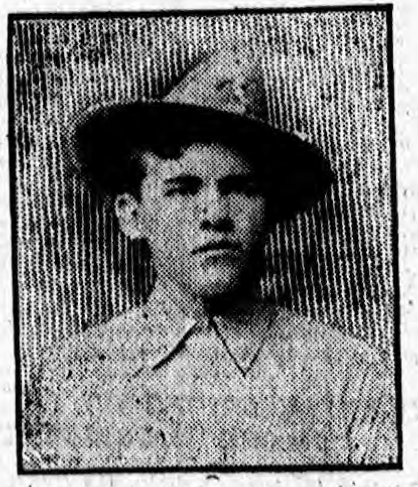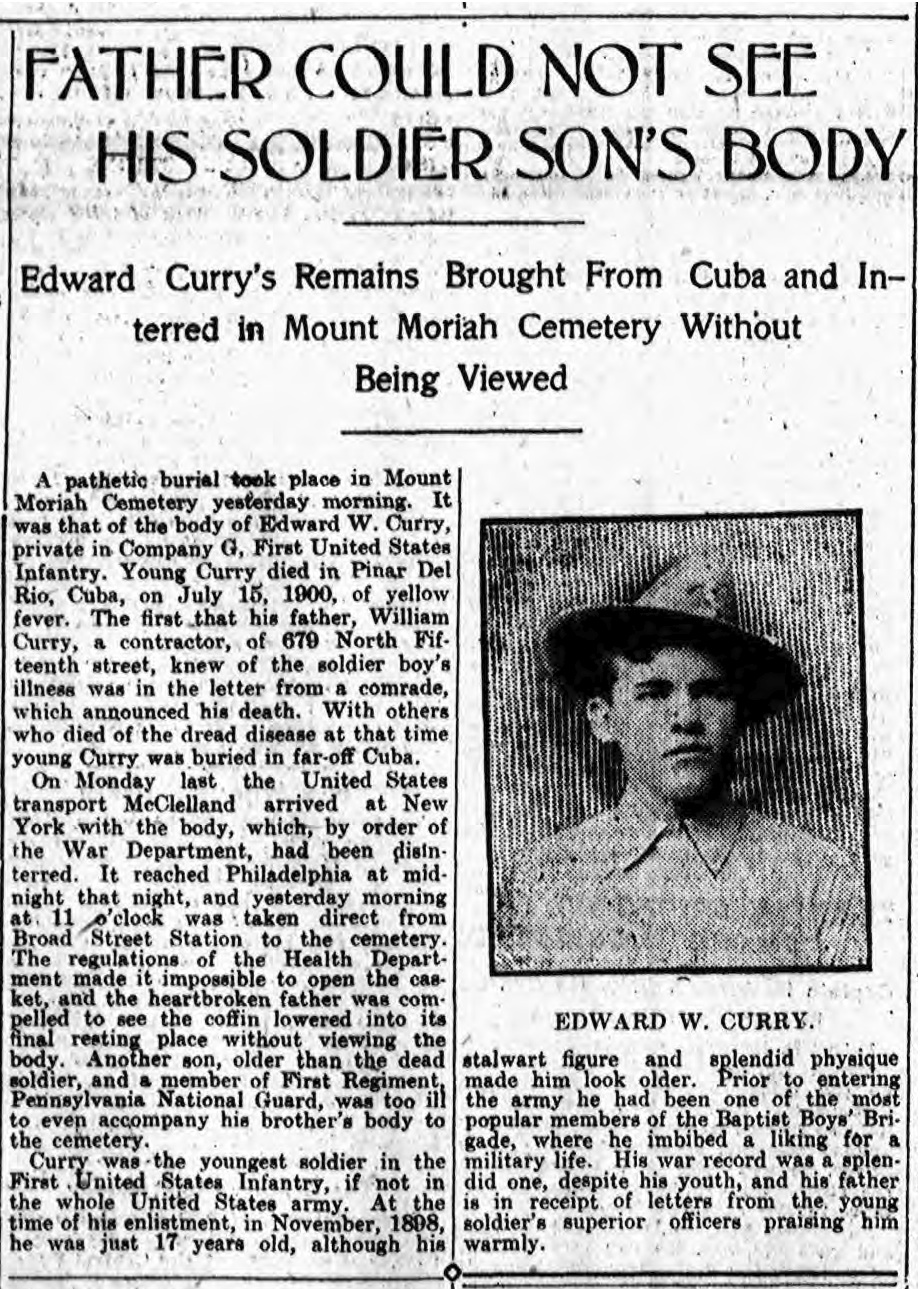Title: Army private, Spanish American War
Birthdate: June 1, 1878
Death Date: July 15, 1900
Plot Location: Section 42, Lot 31, NW quarter

From 1895 to 1898 Cuban revolutionaries were engaged in a violent conflict to free themselves from Spanish rule. The instability of Cuba, both politically and economically, was of major concern to the United States because of its close proximity to the US mainland. The United States also had millions of dollars invested in Cuban businesses, and many citizens resided on the island. As the US closely watched the rebellion, tensions with Spain continued to escalate.
The mysterious sinking of the US Battleship Maine in Havana Harbor in February of 1898 was the flashpoint. On April 20, 1898, Congress approved a joint resolution acknowledging Cuban independence and demanding that Spain give up control of the island. They also authorized President McKinley to use military measures to guarantee Cuba’s independence.
The Spanish government rejected the US demands and severed diplomatic relations. A naval blockade began on April 22, followed the next day by the President calling for 125,000 military volunteers. Spain declared war on the United States and the Spanish-American War was underway, although it was over before the end of the year.
Among those who responded to the call was Edward Curry, a painter and Philadelphia resident. Edward enlisted for a three year term on November 4, 1898 even though the last battle in Cuba was in August, after which Spain surrendered and agreed to peace terms. He entered service as a private in the first infantry but never had to fire a weapon. The Treaty of Paris was signed December 10 but troops remained in Cuba for years.
Due to its tropical climate and unsanitary conditions, there were outbreaks of malaria, yellow fever and dysentery. It is believed that five times as many soldiers died of disease than in battle. Edward would be one of them. He died of yellow fever on July 15, 1900 at the barracks in Pinar Del Rio, a western Cuban province.
President McKinley, a Civil War veteran who fought at Antietam, was said to have been deeply affected by the deaths. He sent teams to Cuba and Puerto Rico to recover the bodies of fallen military so they could be returned to their families. Edward was among them, and was buried at Mt. Moriah on March 19, 1901, eight months after his death.

Support the Friends of Mount Moriah
Help us in our mission to restore and maintain the beautiful Mount Moriah Cemetery by donating to our cause or volunteering at one of our clean-up events.


